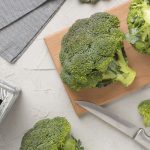It has long been a staple of children’s parties and hospital dinners, but now jelly is taking a star turn after being embraced by everyone from Michelin-starred chefs to the fashion industry.
On social media, videos of elaborate wibbly wobbly jellies are racking up hundreds of thousands of views. The star of Kim Kardashian’s latest campaign for her underwear brand Skims isn’t Goldie Hawn or Kate Hudson but a shuddering dome-shaped pink jelly. Supermarkets are reporting a rise in sales of jelly cubes while the online vintage homeware site Vinterior has had a 500% rise in sales of antique jelly moulds in the past six months.
This is being reflected at supper clubs, where the latest coup de théâtre is not a decadent chocolate tart but trembling jellies that look like mini bundt cakes.
Perhaps key to its revival is nostalgia. “It’s an excellent example of a pudding that pulls on people’s heartstrings,” says Anna Tobias, the chef and founder of Café Deco in London, which features delicate quince and rhubarb versions on its menu. “Rules were a bit looser with jelly. It evokes birthday parties and being able to suck things through your teeth.”
“Jelly is having a climactic, wobbly moment,” agrees Sam Bompas, the co-founder of Bompas & Parr, a London-based creative studio responsible for Willy Wonka-esque culinary spectacles.
Known as “the jellymongers”, Bompas & Parr started playing around with gelatine in 2007, building glow-in-the-dark versions from quinine and jellified replicas of buildings including St Paul’s Cathedral and Madrid airport complete with mini planes. Now they are encouraging fans to follow suit, releasing a range of Christmas pudding-flavoured jelly cubes and architectural-inspired moulds through its fine jelly company Benham & Froud.
“Generally, if a food moves on your plate you’d be alarmed,” Bompas says. “When jelly does you’re delighted.”
Once considered a delicacy because of the time-consuming nature of extracting and clarifying gelatine from animal bones, savoury aspics featuring pigs trotters were popular during the middle ages. Henry VIII was said to favour a jelly made from deer antlers.
The high price of sugar meant sweet jellies were an indicator of wealth. Writing about a feast at the court of Henry VIII in 1517, the bishop Francesco Chieregato recalled the jellies: “Twenty sorts perhaps, surpassed everything; they were made in the shape of castles and of animals of various descriptions, as beautiful and as admirable as can be imagined.”
In the 16th-century Foxe’s Book of Martyrs there is even a story about Thomas Cromwell making jelly for the pope. Fast forward to the Victorian era and thanks to the development of factory produced copper casts and gelatine, extravagant moulded meals became a culinary craze.
Now, the aim of this shuddering resurgence is again to delight and impress guests. Wobbly cherry, salmon and even sheep-shaped jellies have become centrepiece showstoppers.
Caroline Tremlett has amassed more than 60,000 followers on her Instagram account, Adventures in Jelly, with her slow-mo wobbles of antique moulded jellies. A favourite from her 20-plus collection includes a phallic-like 19th-century ceramic steeple mould that Tremlett describes as “tongue in cheek”. “I haven’t had a negative comment in the four years I’ve been doing it,” Tremlett says. “Jelly just brings joy and a smile.”
Freddie Mason, the author of The Viscous: Slime, Stickiness, Fondling, Mixtures, says the surge in interest around jelly is food-centric. “Previously, it was tied to a wider slime craze and there was delight around its synthetic horror. Now there is a realisation that jelly has had a bad rap. People want to move on from those 1950s American aspics. They are realising jelly is a credible form of food.”
Tremlett describes it as a “vehicle for flavour”. At the St John restaurant in London, pears are poached in syrup which is then set with gelatine. At Jikoni, its chef Ravinder Bhogal is championing a blood orange, clementine and juniper jelly as a festive dessert, while TikTok is backing bite-sized lychee martini-flavoured jellies.
Jelly also taps into a wider interest around the health benefits of gelatine as collagen powders and bone broth have become ever more popular. Even the traditional concentrated jelly cube has had a glow up. Zoe Messinger from Gelée sells pretty spheres of non-gmo beef gelatine with added ingredients such as apple cider vinegar for gut health and guava for vitamin C.
The vegan jelly cube market is also growing. Sales are up 90% at Ocado. The food artist Sienna Murdoch has even created her own formula using Irish carrageenan seaweed, using it to make an alien banquet for the film The Marvels, jiggling breastsfor the performance clown Paulina Lenoir and quivering quinces for the indie fragrance brand Ffern. Murdoch believes part of the appeal is because jelly is “cheap and playful”.
Messinger says jelly “checks all the zeitgeist boxes. Retro always comes back around. Like bellbottoms and the colour brown. Now, it’s jelly time.”












